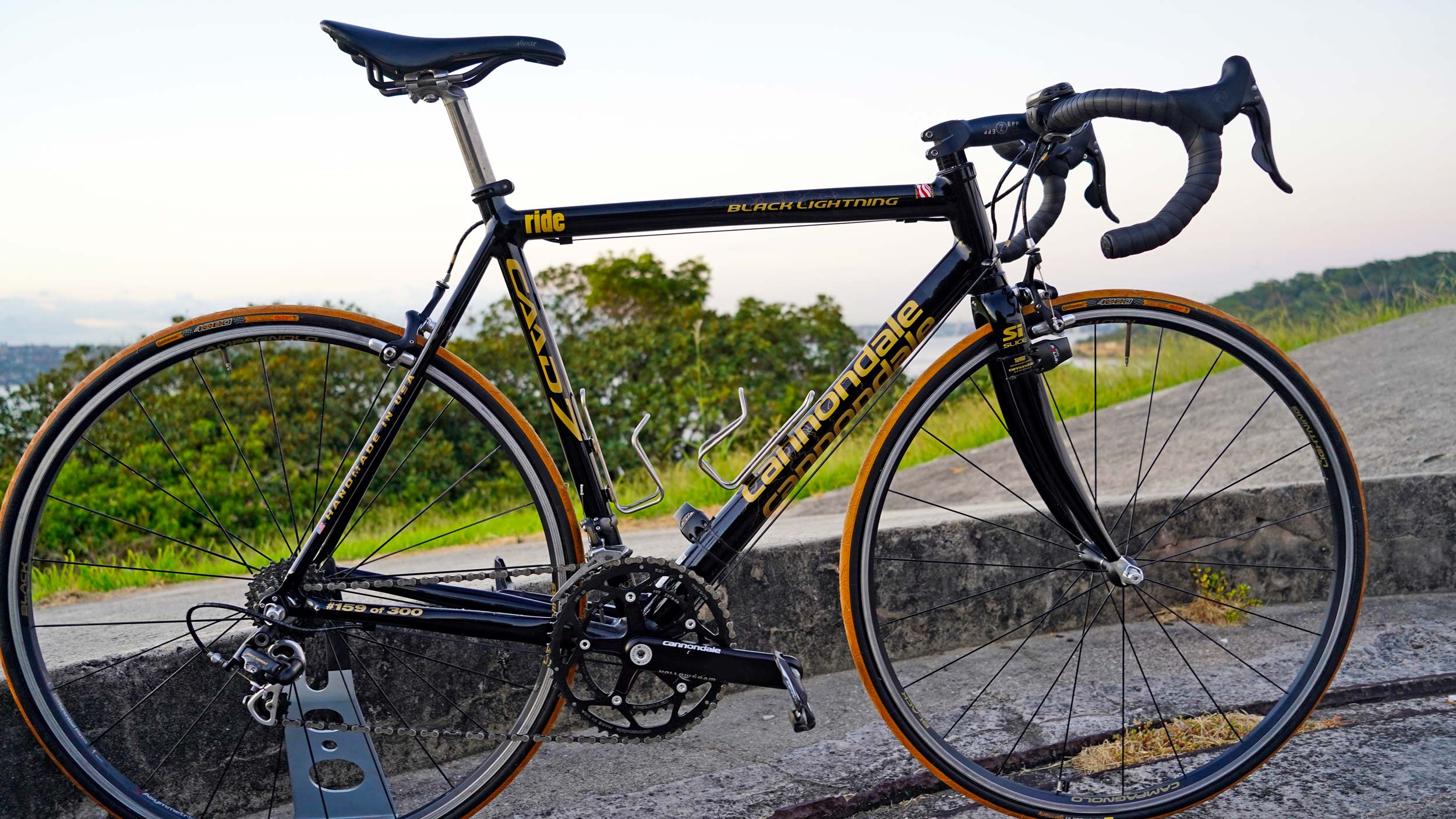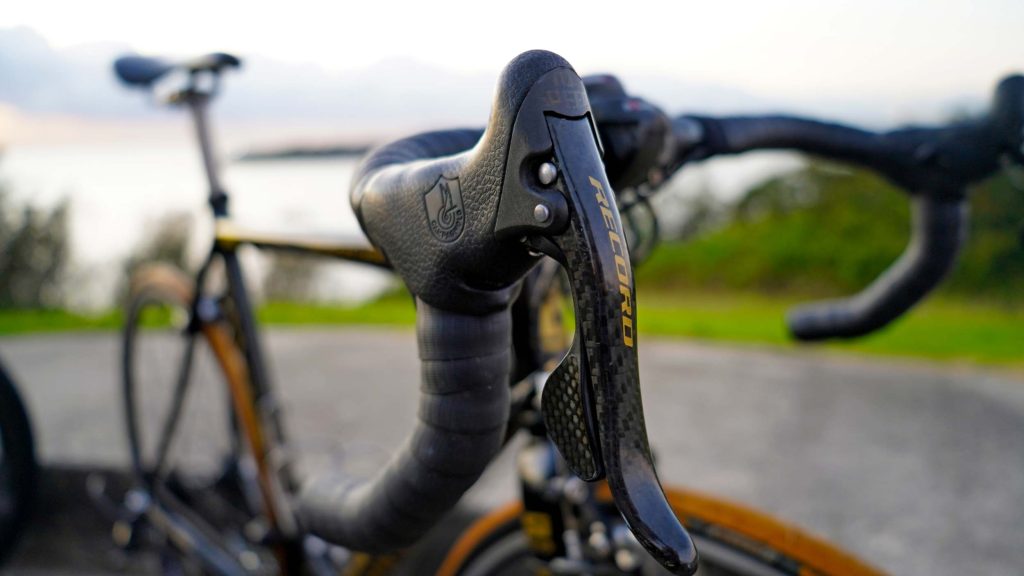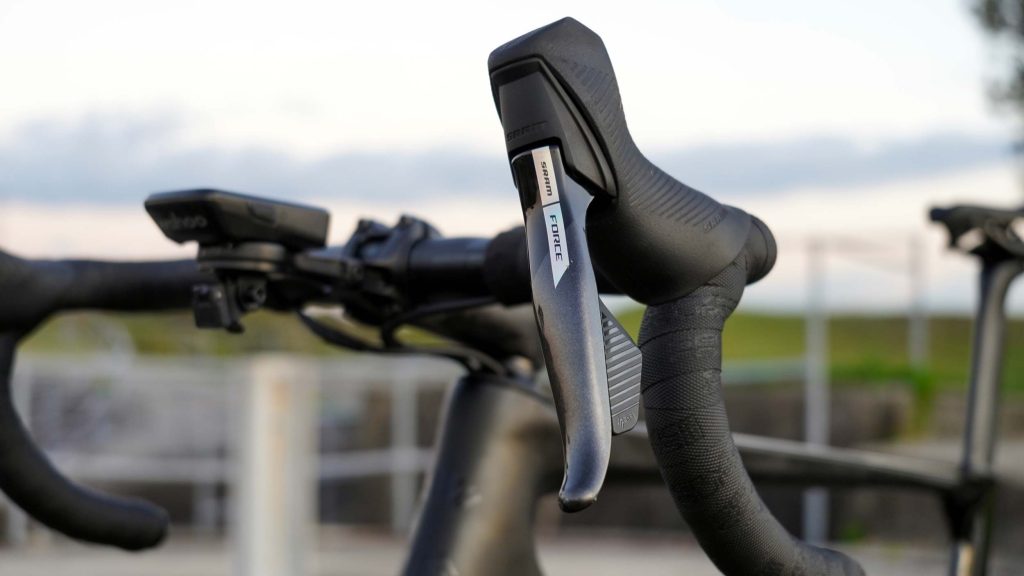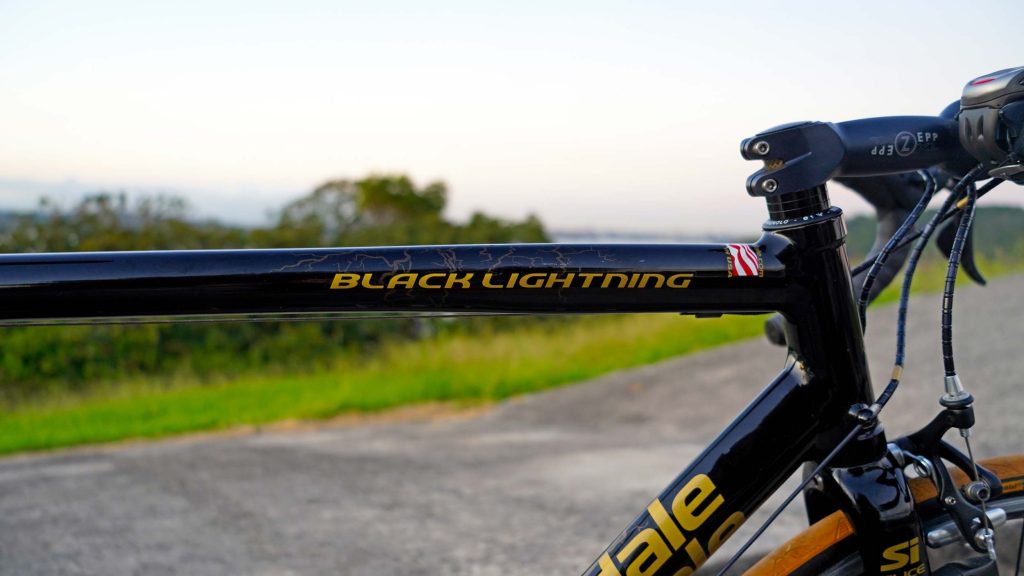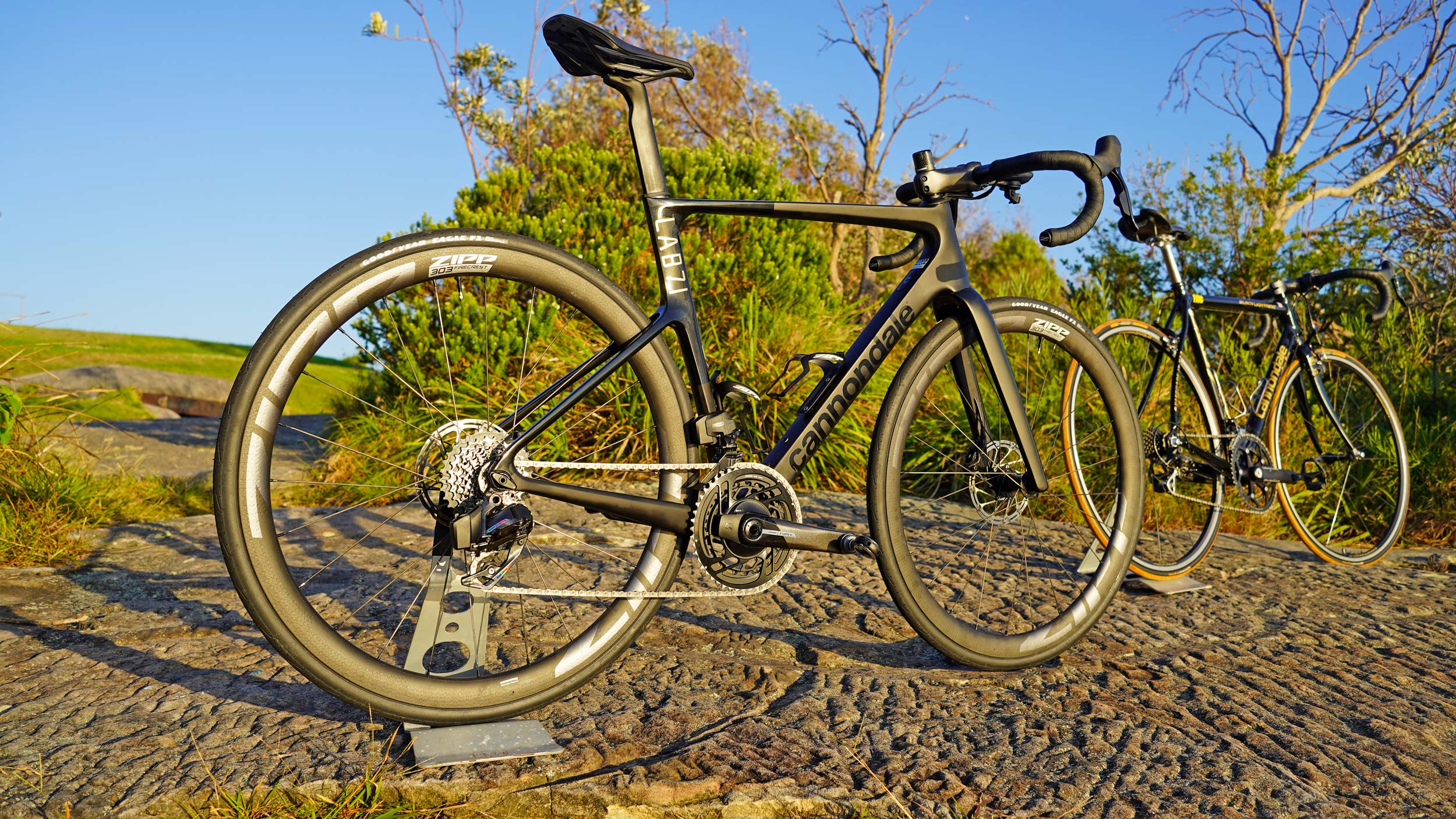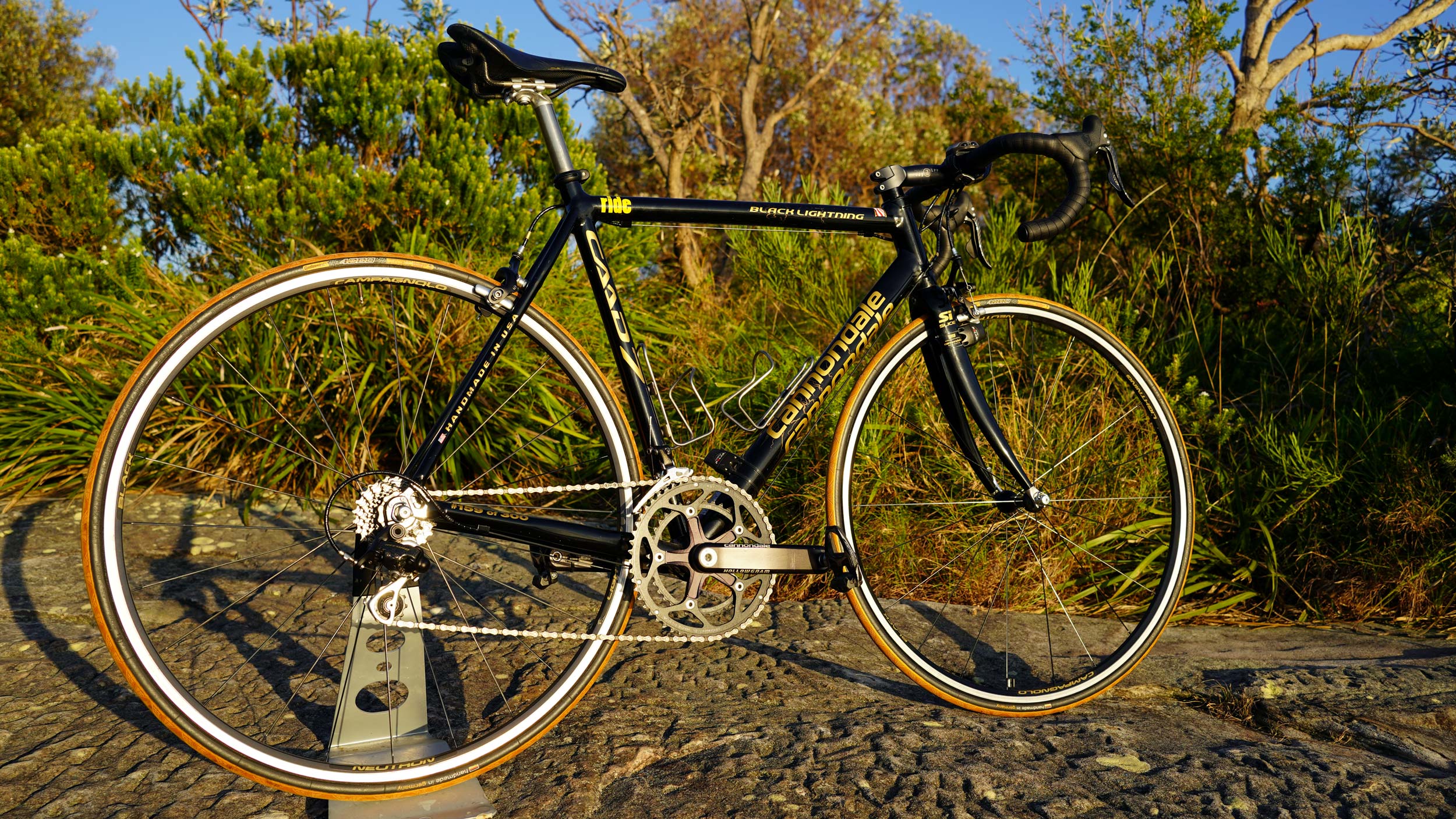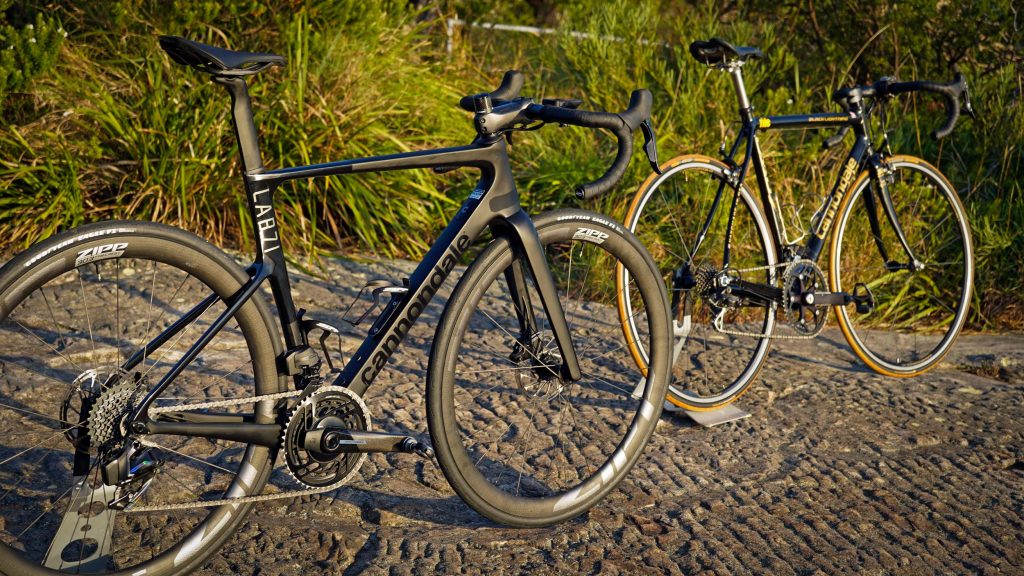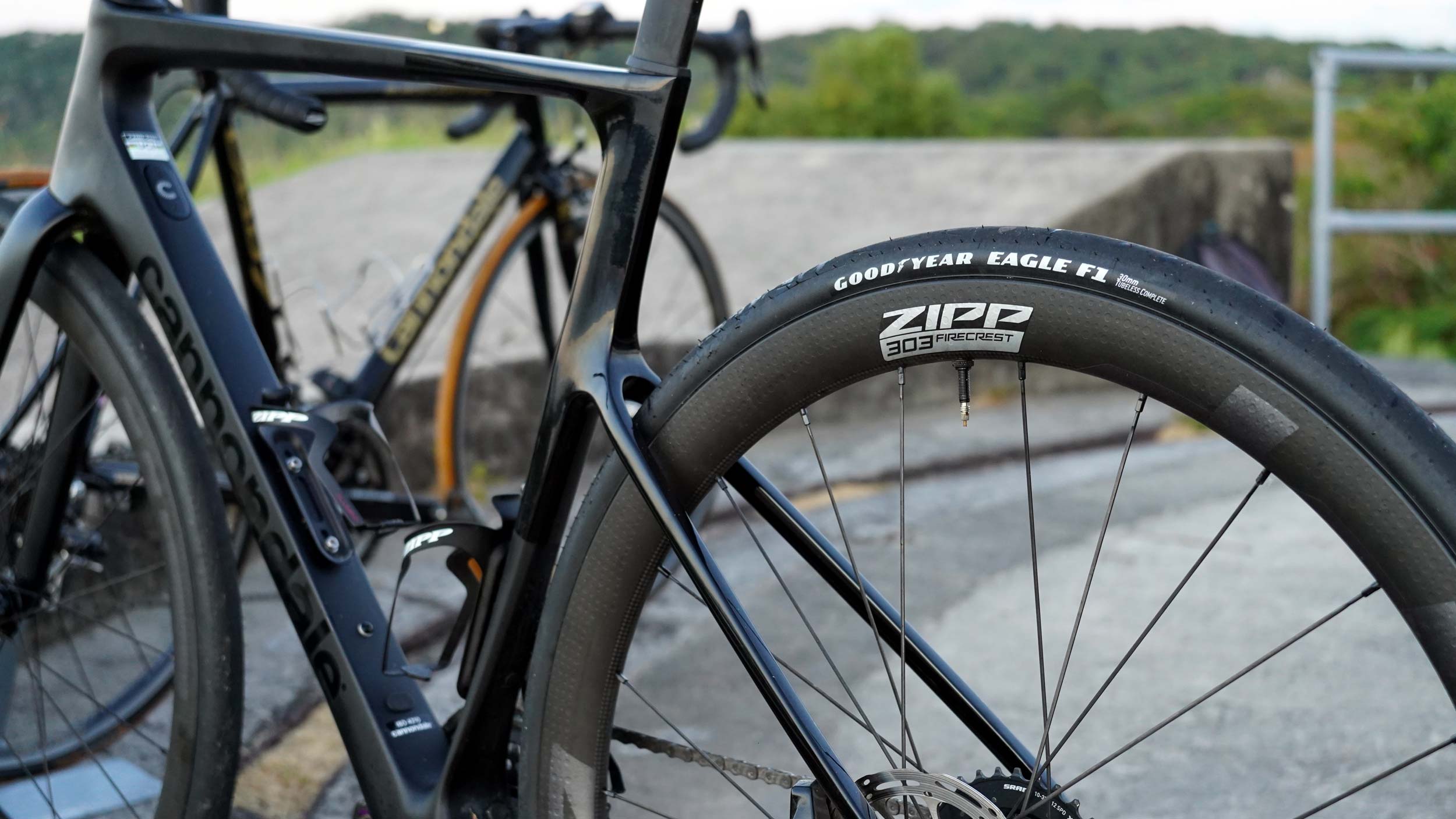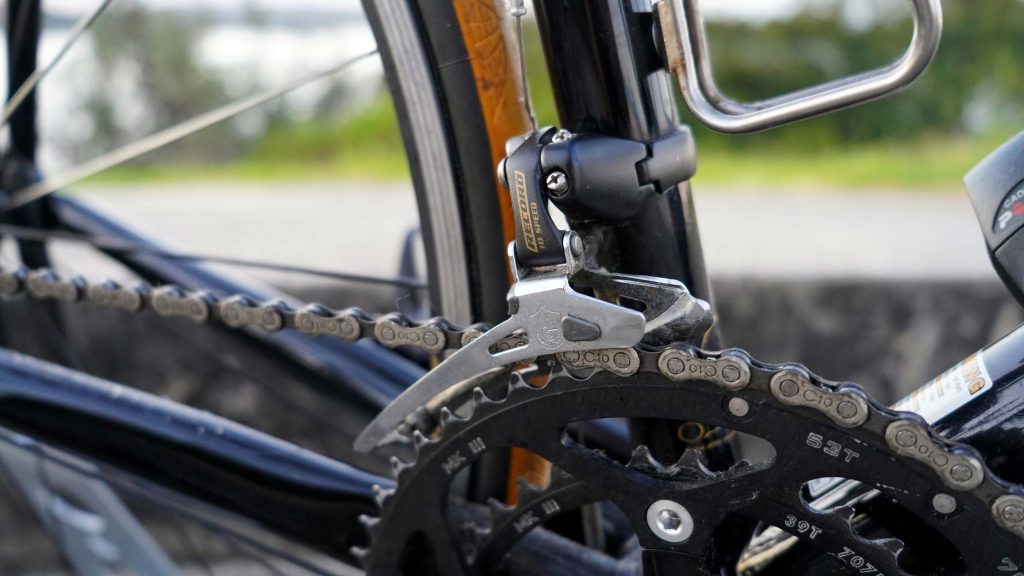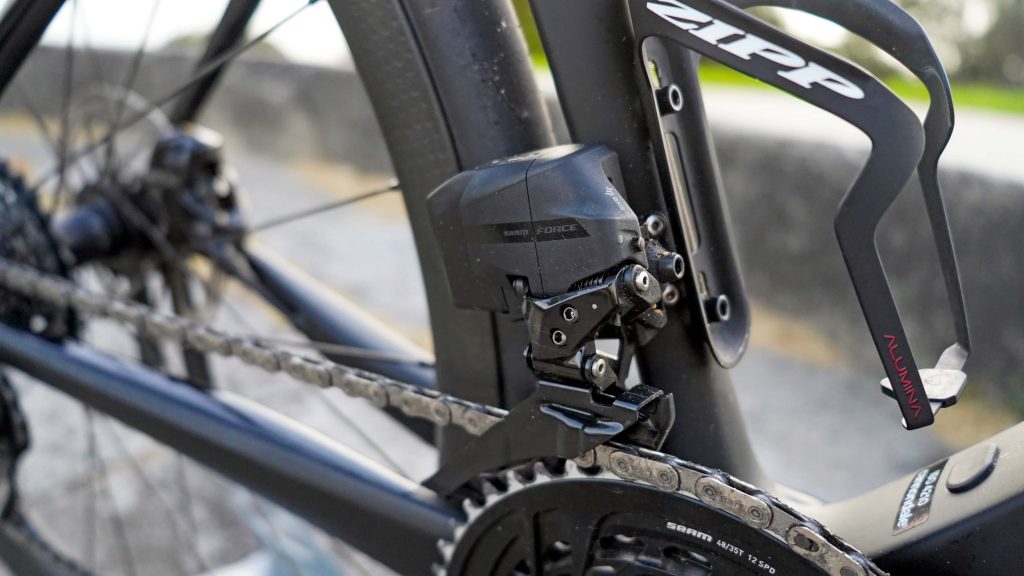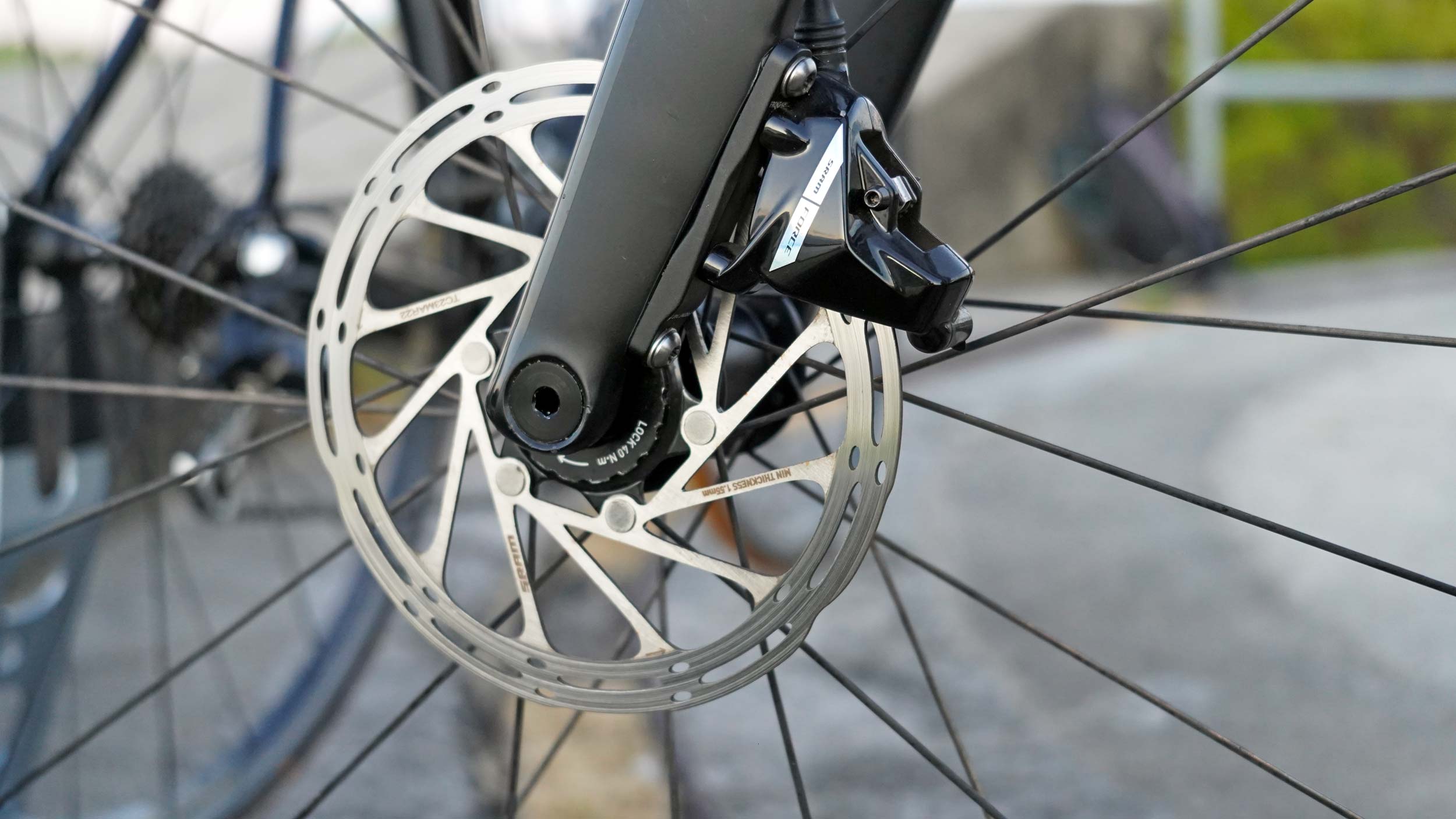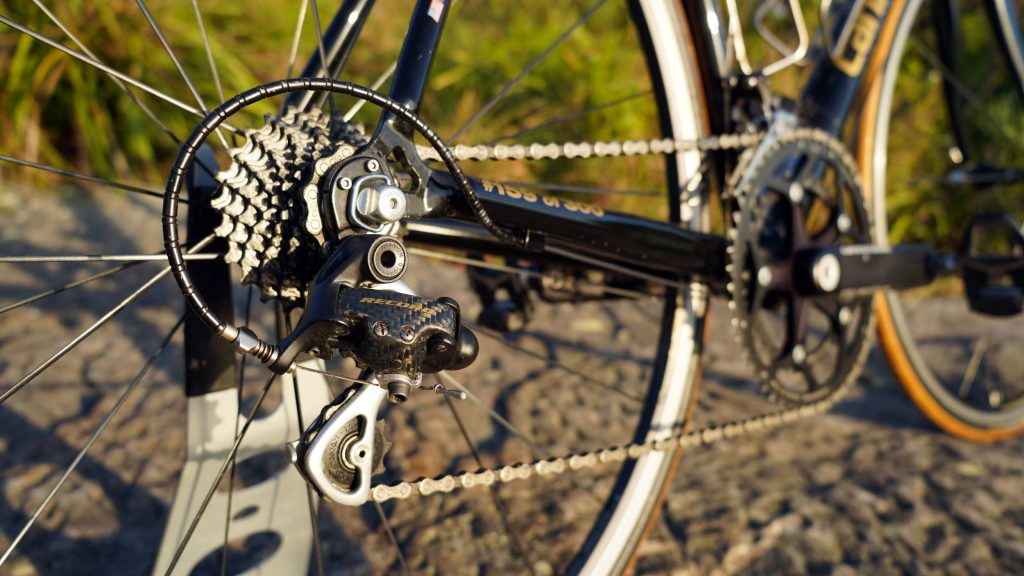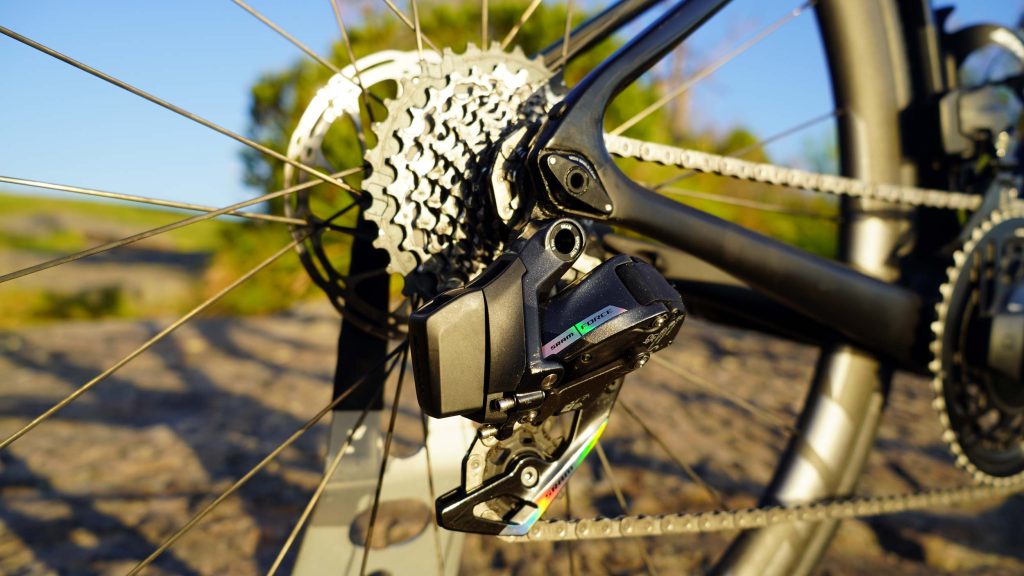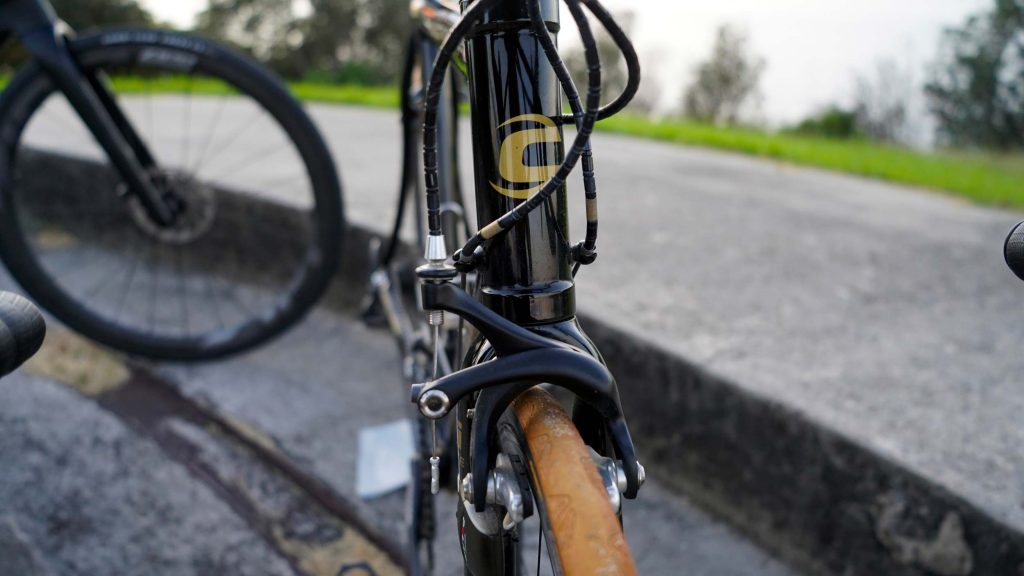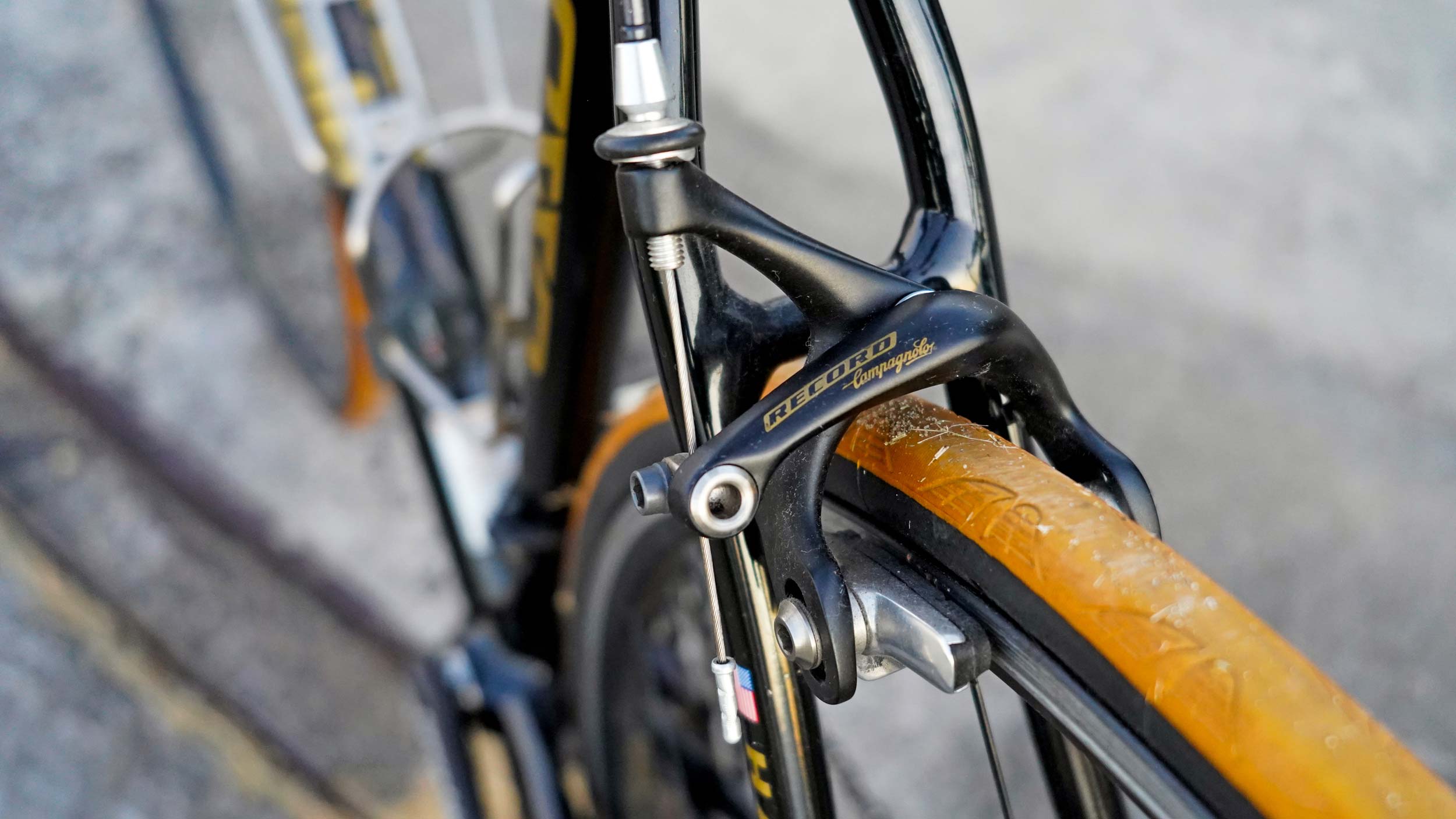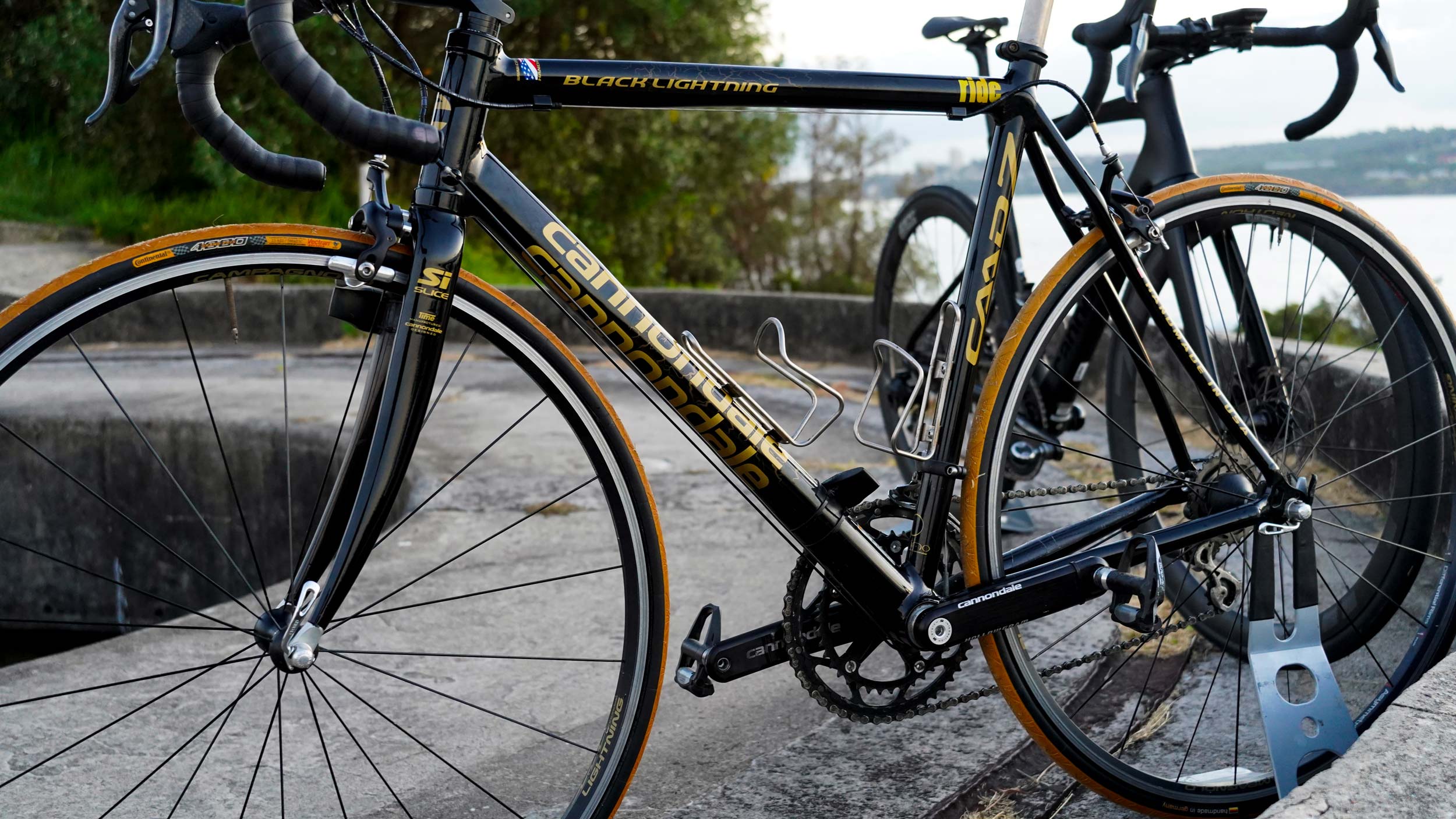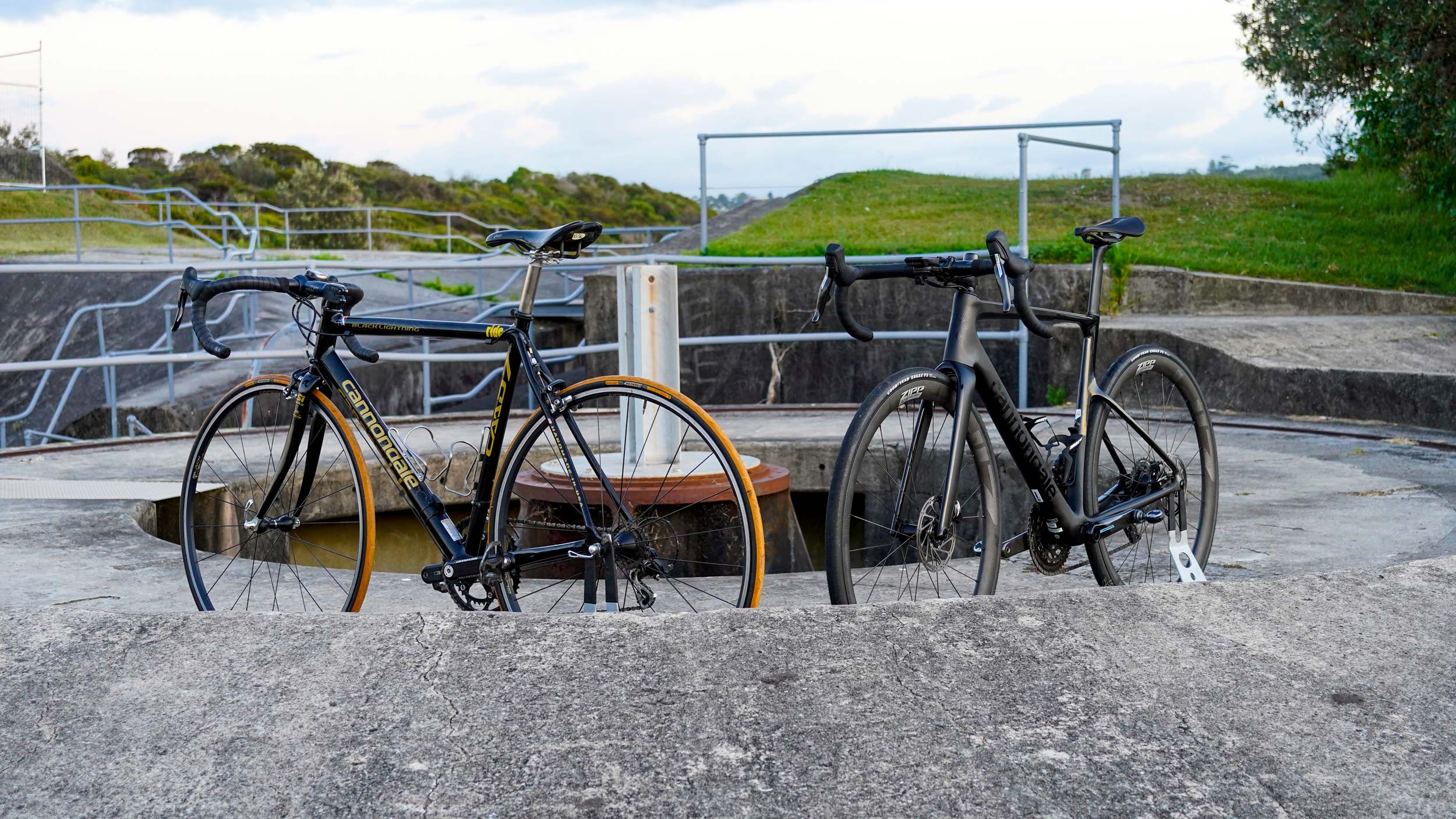Cannondale recently unveiled its Lab71 ‘division’ – which includes a range of bikes that are now part of the brand’s top-tier. RIDE Media has been reviewing the latest SuperSix Evo and you can watch a video comparing the 2023 bike with a special edition Cannondale from 2022…
– By Rob Arnold
On a stunning morning last week, I took two Cannondale bikes – one from 2023, the other from 2002 – to a beautiful location and filmed them as the sun came up over Sydney Harbour. The intention was to showcase the new Lab71 SuperSix Evo with SRAM’s latest Force AXS groupset and compare it to the CAAD7 ‘Black Lightning’ bike I’ve owned since 2002.
With the exception of the Cannondale name, there are few similarities between the two bikes, so it offers a chance to consider the changes in bikes over the last 21 years.
The older bike has an aluminium frame and a special-edition 10-speed Campagnolo Record groupset with rim brakes, a 53/39 chainring combination, 21mm high-pressure tyres, a period-correct Polar cycle computer, ‘Black Lightning’ edition Campagnolo Neutron wheels, and a few modifications from the original spec. It weighs in at 7,087g – as you see it featured in the video (ie. with Shimano pedals, bidon cages, and Polar fittings – speed sensor on the fork and cadence sensor on the downtube).
The Black Lightning was released in 2002 as part of a celebration of Cannondale’s 30th anniversary. It has exposed cables which run along the top tube (for the rear brake) and downtube (leading to the derailleurs), with the original outer cables replaced with the Nokon system.
It is a collectible that takes pride of place in my office and although I don’t ride it often, it remains – in my appraisal – a bike of desire 21 years since it was released.
The new bike has Cannondale’s latest Lab71 SuperSix Evo carbon-fibre frame, the recently released new-generation SRAM Force AXS 12-speed groupset with disc brakes, wireless shifting and a 48/35 chainring combo (complete with power meter) and a FlatTop chain.
Rounding out the spec are 30mm Goodyear Eagle F1 tyres on a Zipp 303 Firecrest wheelset (with hookless rims and a 25mm internal measurement), Zipp handlebars and stem, and Wahoo Powrlink pedals. It weighs 7,872 grams (as pictured).
Highlighting some differences
The older bike is lighter but, as I consider the highlights, it becomes apparent that weight isn’t the only selling point for road bikes in 2023.
They say beauty is in the eye of the beholder; some may like the aesthetic of the Black Lightning and the many unique features of the special-edition release, others might prefer the clean lines and cable-free look of the SuperSix Evo.
In my appraisal, both bikes are still beautiful for their own reasons. When it comes to riding, however, the modern Cannondale easily trumps my collectible from 2002. And many of the key aspects of the better ride quality relate to the innovation that has become possible with the arrival of disc brakes in the road bike market.
It is possible to run wider tyres with rim brakes but, let’s remember, wheels have evolved considerably since disc brakes have become more prominent. Without the considerations required for a braking surface on the rim, wall thicknesses have changed and hookless wheels fitted with tubeless tyres are now commonplace.
Lower tyre pressures are also an emerging trend, providing comfort and handling benefits that I now appreciate even though I was initially reluctant to even try the manufacturers’ recommendations only a few years ago.
Zipp and Goodyear both provide an online tyre pressure calculator. With my details entered, Zipp suggests 49.3psi (front) and 52.4psi (rear). And lo, Goodyear offers the same calculation (no surprise, as the tyre company’s online calculator is “Powered by SRAM”).
When I first started using tubeless tyres, I had hesitations about riding with such low pressure… but a couple of years on, I understand the benefits even if I tend to round out the suggestions with an extra pump or two (starting each ride with ~53psi in my tyres).
In contrast, the trend for road cycling in 2002 was high pressures and narrow tyres.
When I swapped out the original tyres for the gold coloured special-edition Continental GP4000 you see on the Black Lightning, I was told to “bang in 120psi” – that’s what the recommendation on the sidewall suggests (as the maximum).
Ride these bikes with those settings and it doesn’t take long to notice the difference in handling characteristics. One offers comfort and controlled handling, the other is harsh and somewhat unpredictable.
Resistance to disc brakes
The market for road bikes has changed dramatically in the last 21 years and one of the key shifts in the industry came with the introduction of disc brakes. The technology has improved considerably of late but there remains a resistance from some to make the change from rim brakes.
I understand that people long for the ‘pure’, traditional aesthetic of what a road bike has looked like, but I’m baffled by how adamant some are to at least trying the new tech that has come with the disc brake revolution.
Tyre size is one thing and that, in turn, impacts frame design. Some manufacturers have responded to the bigger tyre trend by lowering the bottom bracket and adjusting angles accordingly.
Cannondale’s Lab71 SuperSix Evo hasn’t quite adopted new BB drops like, for example, Focus has done with another bike in my collection, the 2019 Izalco Max.
On the 54cm Cannondale of 2023, the BB drop is 72mm; on my ‘medium’ Focus frame it’s 78mm. The difference is immediately noticeable… and I prefer the Focus approach.
The geometry of road bike frames hasn’t changed dramatically for a long time, but disc brakes have provided some manufacturers with the catalyst to reconsider some traditions.
If you look at the two bikes in this feature, one of the stand-out differences is the cabling. In 2002 there were exposed cables and while they offered a crisp shift (and considerably easier build when compared with internally routed options) it now looks positively archaic.
The aluminium beads of the Nokon cabling helps add to the quality of the shifting on the Black Lightning and, in my appraisal, the bike also looks better because of this system. But it’s still cumbersome when compared with the wireless shifting and internal hydraulic hoses of the SuperSix Evo of 2023.
Traditional vs Modern
Cannondale has been willing to push the envelope with road bike designs since the company was established in 1972. The ‘Lab71 division’ is the latest tag for the top-tier range of bikes and although the associated material on the company site is like marketing bingo – complete with descriptions like “lightest”, “fastest”, “optimized”, “transcend”, “reimagine”, and more hyperbole – the SuperSix Evo is indeed a lovely product.
The latest from Cannondale’s road bike range showcases a lot of innovation from recent years and it is indeed fast and lovely to ride. It looks cool and comes with another modern touch, ie. a high price (with the Lab71 SuperSix Evo frameset retailing in Australia for AUD$6,999 in March 2023).
Meanwhile, my collectible Cannondale from 2002 – which, when released 21 years ago, had a price tag of AUD$9,999 (for the complete bike) – is still particularly appealing thanks to numerous special features.
Both bikes are lovely in their own right but when it comes to going for a ride, I conclude after three weeks on the latest release from Cannondale (and SRAM), the 2023 option is my first choice. It offers predictable handling and benefits that are missing from the Black Lightning.
Click ‘play’ on the video at the top of this page and take a look at the two bikes. It is an example of how much things have changed in 21 years… with a trip down memory lane and a snapshot of what Cannondale is up to with its road bike range in 2023.
There’s a lot more to say about both the Lab71 SuperSix Evo and the CAAD7 Black Lightning, but really the images tell a lot of the story. This is more of a gallery than a bike review, per se, but it was still an interesting way to spend a Friday morning on a magic day in Sydney.
– By Rob Arnold


